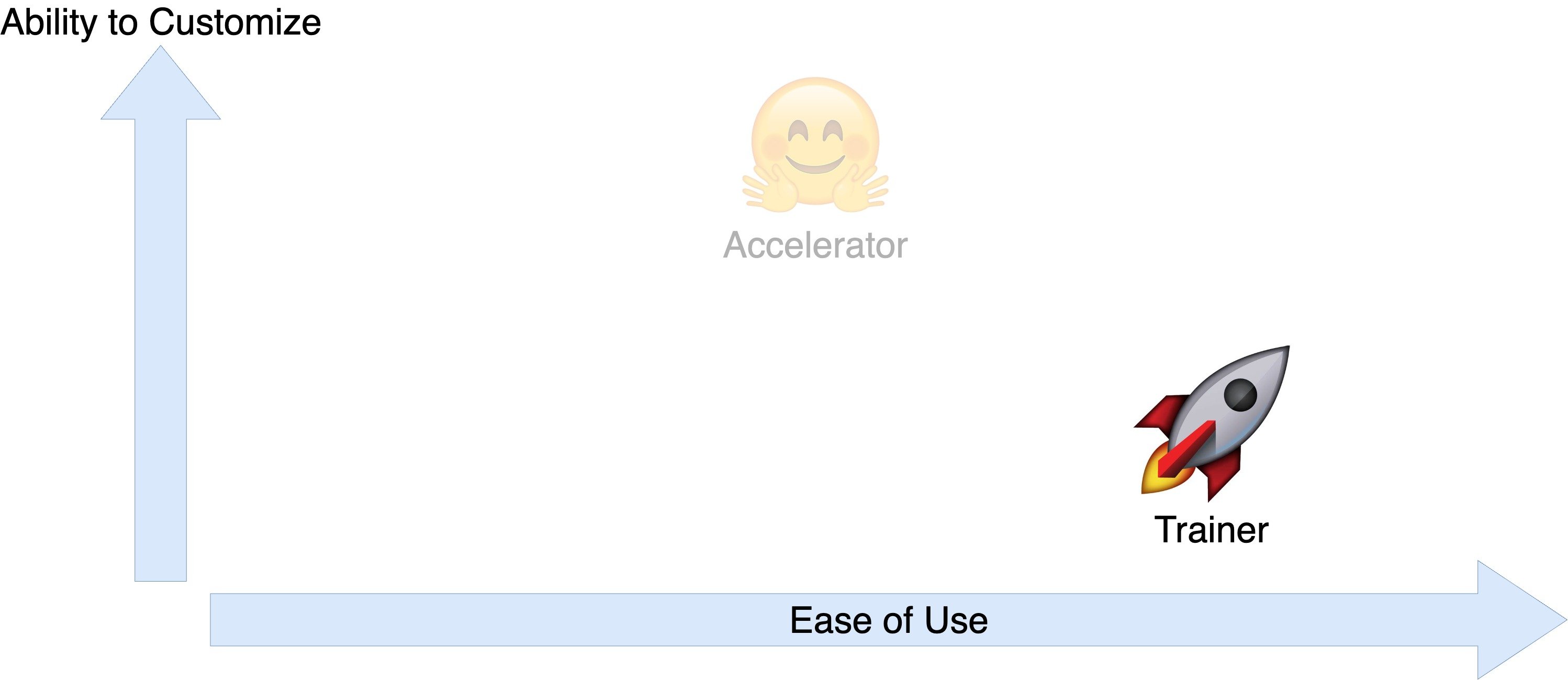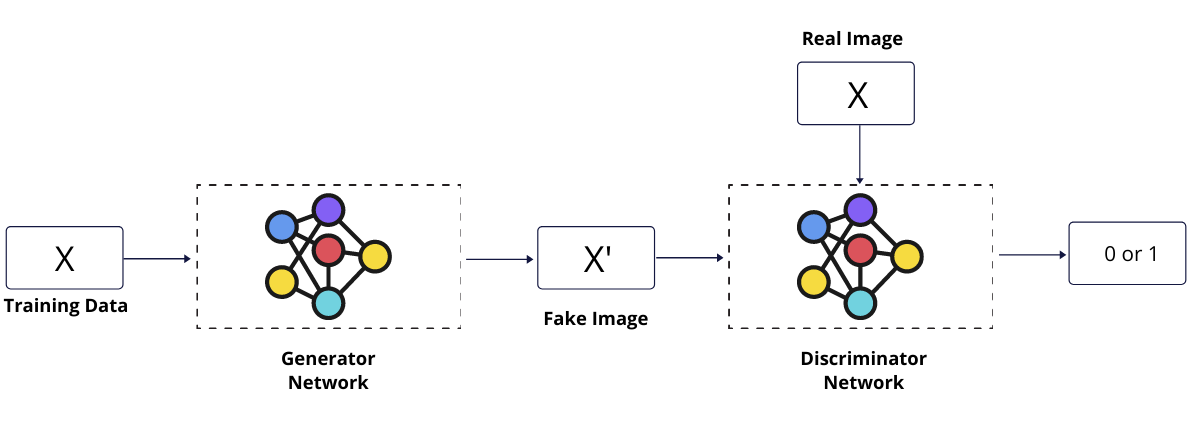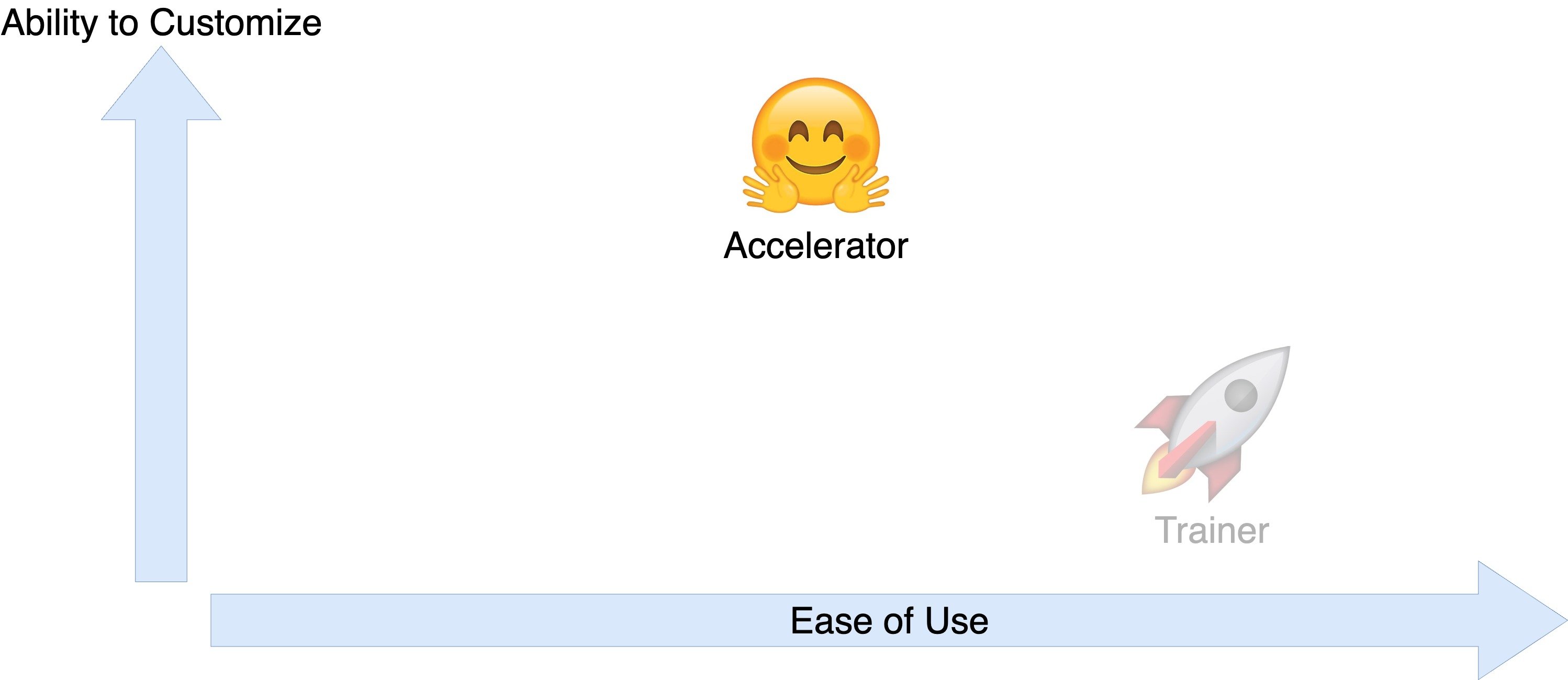Train models with Accelerator
Efficient AI Model Training with PyTorch

Dennis Lee
Data Engineer
Trainer and Accelerator

Custom training loops
- Trainer: no custom training loops
- Some advanced tasks in generative AI require two networks

1 https://www.aitude.com/basics-of-generative-adversarial-network-model/
Trainer and Accelerator

Modifying a basic training loop
for batch in dataloader:optimizer.zero_grad()inputs, targets = batch inputs = inputs.to(device) targets = targets.to(device)outputs = model(inputs)loss = outputs.lossloss.backward()optimizer.step() scheduler.step()
- Zero the gradients
- Move data to a specified device:
.to(device) - Perform forward pass
- Compute cross-entropy loss
- Compute gradients in a backward pass
- Update model parameters, learning rate
Create an Accelerator object
Acceleratorprovides an interface for distributed training
from accelerate import Accelerator
accelerator = Accelerator(
device_placement=True
)
device_placement(bool, defaultTrue): Handle device placement by default
Define the model and optimizer
- Load a pre-trained model
from transformers import AutoModelForSequenceClassification
model = AutoModelForSequenceClassification.from_pretrained(
"distilbert-base-cased", return_dict=True)
- Optimize model parameters with
Adam
from torch.optim import Adam
optimizer = Adam(params=model.parameters(), lr=2e-5)
Define the scheduler
from transformers import get_linear_schedule_with_warmup lr_scheduler = get_linear_schedule_with_warmup( optimizer=optimizer,num_warmup_steps=num_warmup_steps,num_training_steps=num_training_steps)
optimizer(obj): PyTorch optimizer, likeAdamnum_warmup_steps(int): steps to linearly increaselr, set toint(num_training_steps * 0.1)num_training_steps(int): total training steps, set tolen(train_dataloader) * num_epochs
Prepare the model for efficient training
- The
preparemethod handles device placement
model, optimizer, dataloader, lr_scheduler = \ accelerator.prepare(model,optimizer,dataloader,lr_scheduler)
Building a training loop with Accelerator
for batch in dataloader:optimizer.zero_grad()inputs, targets = batch inputs = inputs.to(device) targets = targets.to(device)
- Zero the gradients
- Previously moved data to the device
Building a training loop with Accelerator
for batch in dataloader:optimizer.zero_grad()inputs, targets = batch
- Zero the gradients
- Previously moved data to the device
- Remove lines that manually move data
Building a training loop with Accelerator
for batch in dataloader:optimizer.zero_grad()inputs, targets = batchoutputs = model(inputs)loss = outputs.loss loss.backward()
- Zero the gradients
- Previously moved data to the device
- Remove lines that manually move data
- Perform a forward pass
- Compute cross-entropy loss and gradients
Building a training loop with Accelerator
for batch in dataloader:optimizer.zero_grad()inputs, targets = batchoutputs = model(inputs) loss = outputs.lossaccelerator.backward(loss)optimizer.step() scheduler.step()
- Zero the gradients
- Previously moved data to the device
- Remove lines that manually move data
- Perform a forward pass
- Compute cross-entropy loss and gradients
- Replace
loss.backwardwithaccelerator - Update model parameters, learning rate
Summary of changes
Before Accelerator
- Need to manually move data to devices
inputs.to(device)targets.to(device)
- Compute gradients with
loss.backward()
After Accelerator
- Automatic device placement and data parallelism
accelerator.prepare(model)accelerator.prepare(dataloader)
- Handle gradient synchronization with
accelerator.backward(loss) - Customizable loop
- User-friendly, hardware-agnostic, scalable, and maintainable
Let's practice!
Efficient AI Model Training with PyTorch

